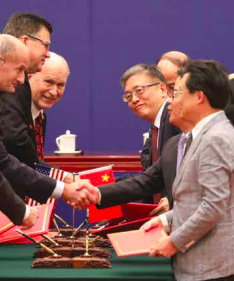As Gov. Bill Walker and a delegation of business and government representatives embark on a trade mission to China on Saturday through May 26, Must Read Alaska brings you a cautionary view from scholars studying the growing influence of China on state politics in America, even while President Donald Trump is taking a more guarded path.
For signs of Beijing’s Arctic ambition, Washington need look no further than Alaska.
After Chinese President Xi Jinping left the Mar-a-Lago summit with U.S. President Donald Trump in April 2017, he stopped in Alaska, not Silicon Valley, to talk business. Alaskan Governor Bill Walker pitched Xi on his state’s economic opportunities, including liquefied natural gas (LNG) shipments. Before Trump’s trip to China a few months later, the White House announced multiple memoranda of understanding between U.S. and Chinese oil and gas corporations, including the $43 billion Alaska LNG project. In the months since these presidential visits, the U.S.-China relationship — now on the precipice of a trade war — has grown tense. But in Alaska, deals are still moving forward.
China’s energy interests are not limited to just Alaska, but include the entire Arctic, where climate change is opening up new shipping lanes and recoverable energy resources. As ice begins to melt, energy-insecure Beijing has begun to assert itself more forcefully in the region, investing in the economic, diplomatic, and strategic benefits that it believes the Arctic will bring. Unless the United States pays more attention to China’s Arctic ambitions, Beijing will strengthen its economic and strategic position in the world’s largest emerging frontier at America’s expense.

Beijing to Juneau
The flurry of deals between Beijing and Juneau stem from China’s frenzied rush to secure projected LNG demand. The world’s second largest LNG importer, China has already signed deals with Australia and Qatar, among others, for 40 million tons a year through 2030, but will still need an additional 20 million tons by the end of that period.
[Read the rest of this story at The Diplomat Magazine]
[Read: Governor announces roster of trade mission participants]
